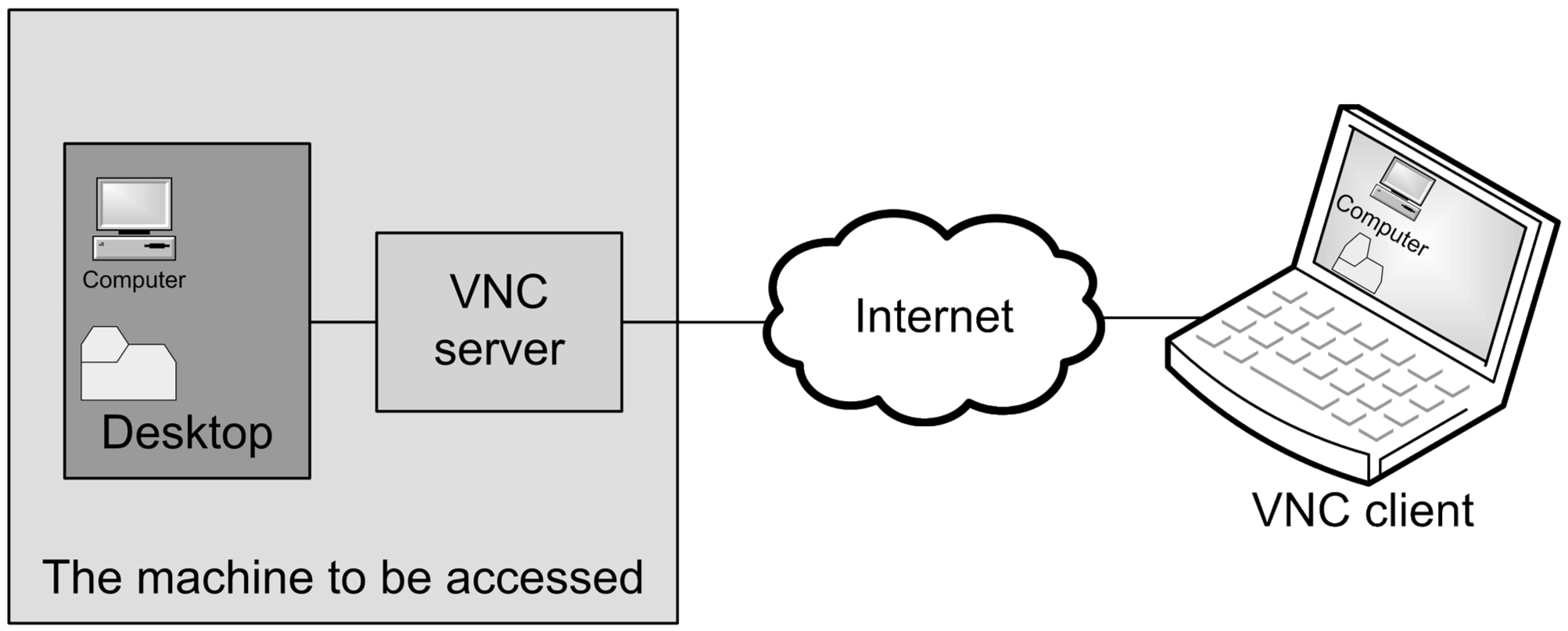FTC disclaimer: This post contains affiliate links and I will be compensated if you make a purchase after clicking on my link.
VNC, which stands for Virtual Network Computing, is a type of technology that enables users to connect remotely to numerous computers.
In other words, it helps users to remotely access one computer from another computer or the other way around.
Further, it transmits keyboard and mouse events from the server to the client computer. It is carried out using the Remote Frame Buffer protocol (RFB).
VNC is a type of remote desktop technology that helps you build up home computer networks and access a computer from a different place.
Network administrators take advantage of VNC to troubleshoot systems remotely.
What is Virtual Network Computing or VNC?
Virtual Network Computing is a remote desktop sharing application that controls and accesses one computer from another computer over a network connection.
Further, VNC is platform-independent and has cross-platform capabilities.
It means a user computer can have OS like Microsoft Windows and can remotely access a computer having OS like Linux, or Mac, or Windows.
Moreover, VNC also transmits keystrokes and mouse clicks from one computer to another. It helps manage remote desktops, servers, or other networking devices from different locations.
It was first developed by Quentin Stafford-Fraser at AT&T laboratories as an open-source research project under the General Public License (GNU).
The prerequisite of VNC is that it should network with TCP/IP and have open ports that allow traffic from other devices.
How VNC (Virtual Network Computing) works?
VNC works on a client-server model, which uses a specialized network communication protocol called the remote frame buffer.
It consists of three parts; client, server, and RFC.
What is a VNC server?
The VNC server is a type of program which you will find on machines or computers that allow other devices or computers to take control of it passively.
Further, it provides services that give access to data or resources to single or multiple clients.
What is a VNC client or VNC viewer?
The VNC client is a program that allows machines or computers to take access or control remote devices or computers.
Remote machines can be your computer, tablet, or smartphone.
A VNC viewer transmits user input such as clicks, mouse movement, touches, and keystrokes to the VNC server.
What is RFC (Remote Frame Buffer)?
Remote Frame Buffer is a VNC protocol or communication protocol.
RFC is a type of communication protocol used by VNC to govern the data or graphical interface transmitted from server to client or vice versa.
In other words, it allows the client to take control, view, or process from another computer remotely.
You should note that one server can access multiple clients, and one VNC client can use multiple servers.
Further, it transmits the keyboard, mouse, or touch events from the VNC client to the VNC server.
How does connection take place between client and server?
The VNC client and VNC server should be configured appropriately on both sides to start the connection between client and server.
When the client connects with the server for the first time, the server requests authentication. The client input password to start the session.
The client and server are connected and agree to share the desktop screen with the required screen size and pixel format.
Also, the transfer of data from client to server or vice versa occurs in network security.
The default TCP port through which the user can connect to the server is 5900. The other available TCP port is 5800 and 5500.
Port 5500 is in the “listening mode,” which means firewall configuration is not required to access the server-side.
What are the alternatives to VNC?
There are many alternatives to VNC, but very few are incorporated with enhanced features and security options.
The three most popular alternatives to VNC are:
- Windows Remote Desktop
- Chrome Remote Desktop
- Apple Remote Desktop
Windows Remote Desktop is an excellent alternative to VNC, and it started with Windows XP. It uses a protocol called a remote desktop protocol.
The remote desktop protocol does not work directly with framebuffers, unlike RFC protocol. It will first break the desktop screen into a set of instructions to generate framebuffers and then transmit directly to the remote connection.
Further, the advantage of Windows Remote Desktop (WRD) over VNC is that it takes less bandwidth and is more responsive to user interaction.
Chrome Remote Desktop uses Chromoting protocol which is supported by Chrome OS devices.
Apple Remote Desktop uses an extended RFB protocol enhanced with usability features and security. It is supported by macOS devices only.
Several third-party remote desktop applications are available for users to use and test.












